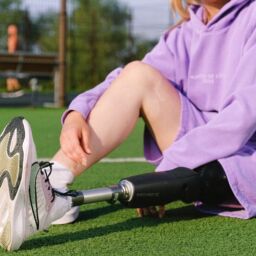“What you lack in any investigation is time. With every passing hour, evidence slips away. Crime scenes are compromised by people and the elements. Things are moved, altered, smeared, and shifted. Organisms rot. The wind blows dust and contaminants. Memories change and fade. As you move away from the event, you move away from the solution.”
– Maureen Johnson.
The above quote is pulled out from the hardcover “Truly Devious” by Maureen Johnson furthermore, it gives a thought of why innovative advances in the field of criminal examination are required. In addition to the fact that it helps you settle criminal cases precisely and rapidly, however, it likewise helps in circumstances where you have been not able to determine a case for quite a while because of an absence of proof. The only requirement is a promising job. This Blog depicts how propels in science can help both criminal science and the criminal equity framework address research questions. This is ordinarily known as “forensic criminology”.
INTRODUCTION
Imagine a crime location. The body is all around dispersed and it seems as though blood is streaming to the ground. The individual has been blamed for the wrongdoing. He denies something similar. At this stage, a few inquiries emerge. What was the explanation for the charge that killed the person in question and how could he kill the person in question? Is there proof that the charged perpetrated the wrongdoing? How was your state of mind and situation? This is the stage where criminology plays a role in distinguishing the conditions and purposes for wrongdoing. Science, then again, sets up a connection between the circumstance and proof that gives precise, solid, and unbiased data. In this way, criminal science and criminological medication are firmly identified with a criminal examination.
Society is going through major mechanical changes, and with these progressions, criminals have developed this technology while adopting better ways to hide their identities. In addition, today everyone has access to smartphones and internet connections, improving the average person’s knowledge of science and technology. The Internet is a simple source of information for exploring different ways to commit crimes without being caught. Utilizing the dark web for crime is much more irritating in light of the fact that it leaves no hint of data. Advances in technology have made crime readily available. However, we can also use the same fingertips to help investigate crime. Scientific medication is a device comprising of different ideas like science, humanism, criminal brain research, DNA profile, physical science, science, liquid investigation, calligraphy examination, and software engineering. It gives a high-level strategy to better criminal examination and legal organization.
HOW SCIENTIFIC CRIMINOLOGY WORKS IN CRIME INVESTIGATION
Criminal science works on these main rules:
- Rule of Individuality – According to this rule, each item, regular or fake, has an unexpected individual character in comparison to different articles and can’t be copied. Two vital instances of this rule are DNA and fingerprints. Fingerprints were utilized as proof in a few criminal cases. In the case of State v. Karugope [1] the Patna High Court has expressed that the assessment of the unique finger impression master is adequate proof for a conviction.
- Exchange Rule – Edmond Locard a forensic scientist, popularly regarded as the “Sherlock Holmes of France” established this rule by calling it “contact trace exchange”. This basically means that when wrongdoing is carried out, the criminal leaves fingerprints or gets them. When utilizing a weapon, it makes an imprint on the casualty’s body. In case there is a debate between the two, the criminal can leave hints of his DNA on the casualty’s nails or hair. Criminological medication builds up joins between witnesses, casualties, and crooks.
Ballistic fingerprints associate shotshells to the discharged weapon. Sperm in utilized condoms helps discover attackers. Body nibbles can be utilized to fit the presumes teeth. The idea of the injury might demonstrate the kind of weapon utilized if the weapon was not accessible. Blood, fingerprints, opiates, and fundamentally any substance accessible whatsoever crime location recount the story.
- Rule of progressive change- As the name suggests, this rule implies that everything changes after some time. Time affects everything, both criminals and evidence. Everything that can be proven should be handled with the utmost care. For instance, blood tests, sperm, hair, fingerprints. These follow ought to be thoroughly gathered and examined quickly to guarantee precise revealing without loss of properties. We need to maintain the quality of the sample.
FORENSIC SCIENCE AND FUTURE OF CRIMINAL INVESTIGATION
Advances in forensic methodologies can work tremendously in the future. Forensic analysis today is not perfect, but it may offer better methods in the future. DNA analysis will make great strides in the criminal justice system. Take a look at the various forensic tools that will offer more in the future.
A technology called DNA phenotyping is the study of foreseeing a creature’s noticeable physical or biochemical attributes (aggregate) by utilizing just hereditary data from DNA sequencing or genotyping. One more generally utilized term for DNA phenotyping is atomic photofitting. The strategy is fundamentally used to anticipate an individual’s actual appearance as well as a heritage for scientific purposes. It will make a big difference in the world of forensic medicine. We can use this technique to create portraits of people with only DNA samples. Genes are involved in physical characteristics such as skin color, hair color, height, eye color, face shape, and, in some cases, weight. DNA is a storage chamber with a myriad of human characteristics, and experts say that the person’s geographic origin can even be said. However, some parts of the human body do not contain DNA. DNA phenotyping is still under investigation, and if its credibility is proven, it will be a remarkable advance for criminal investigations.
Therefore, we can use the DNA found in old used condoms to determine when the rape took place. Bacterial Characteristics: Research is being conducted on the traces of bacteria that people leave everywhere, not only on the surface we touch, but also in the air, we breathe. Scientific research shows that the human body contains many bacteria that are endemic to everything. These bacterial samples can be taken from the suspect’s feces and compared to the traces found at the crime scene. Fingerprints have long been used to identify people.
However, some cases have led to illegal convictions, which means that it is not without mistakes. Recent studies have shown that fingertips secrete many substances that people ingest as part of their diets, such as fat and protein. These things also give us an idea of what the person looking for traces is consuming in their diet in the future. However, researchers have not yet used these advanced methods.
CONCLUSION
Facilitating forensic research provides us with an unprecedented opportunity to resolve criminal cases and uncover the mistakes made during the investigation. Ultimately, it helps investigators prosecute criminal cases at the right time and on the right track, and arrest the accused. Therefore, there is more than a need for evolving technological advances in the field of criminal charges that will help resolve the case as quickly and fairly accurately as possible. The only requirement is a promising clue from scientific analysis of the crime scene, warning investigators to get on the right track. In this way, science helps streamline the entire investigative process in the areas of criminology and the criminal justice system.
Author(s) Name: Tanaya Aklekar (DY Patil School of Law, Nerul)
[1] AIR 1954 Pat. 131.
















